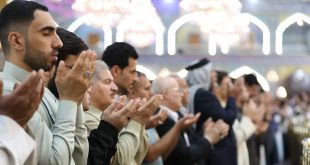Sajjad Shah from Pakistan describes the horrific aftermath of Hajj Crush and the mistreatment of the dead as he tried to recover his sister’s body in Saudi Arabia.
September’s pilgrimage to Mecca was the deadliest in years, with fatalities from a stampede approaching 2,000. One man describes the horrific aftermath and the mistreatment of the dead as he tried to recover his sister’s body in Saudi Arabia
“The situation was one of sheer hopelessness,” says Sajjad Shah from Pakistan. “Those who could afford to stay and search for their dead loved ones did so. The others just had to go home.”
Almost three months after the deadliest Hajj crush in 25 years, the Saudi government’s official death toll still stands at 769, but most sources put the figure closer to 2,000. Shah, a hotel-owner from Mirpur, spent a month searching for his dead sister, but claims he met resistance from Saudi officials who covered up the full extent of the tragedy.
Just before 9am on 24 September, two groups preparing for one of the last major rites of the pilgrimage – the stoning of the devil – collided at the intersection of two roads. Shah says that his sister Syeda and nephew Irtaza, a student, were near the front of the crowd that poured across the Jamarat bridge.
People were packed so tightly that they could not breathe and started tumbling over each other, and many became trapped underfoot,” Shah says. Saudi officials denied reports that the stampede was linked to the closure of two roads near the bridge for a prince and his 350-person convoy, but protesters say leaving them open would have prevented the crush.
The road was flanked by 14ft-high fences and Irtaza tried to climb one. But he was knocked out for several hours and, when he regained consciousness, was too weak to pull his mother out from a pile of bodies. “That’s my mummy,” the 26-year-old shouted. But an officer tore him away. “No mummy, go home.” When he returned later on, he could not find her.
“My nephew went back to the hotel and phoned me in Pakistan. That’s when he told me that Syeda died right in front of him,” Shah says.
Alone and unable to speak Arabic, Irtaza spent days scouring the dead bodies that lined the street, pulling rags from the faces of victims, each time in the hope that it would be his mother. “He walked through puddles of blood with bodies everywhere,” Shah says. “It was the closest thing to hell on earth.”
When Shah secured a visa, he arrived in Mina to devastation and a nephew turned half-mad by grief. By this time, five days after the crush, the authorities had begun to sweep up bodies, so Shah and Irtaza abandoned the blood-soaked streets and searched the city morgue. It was there that Shah saw about six or seven lorry-loads of bodies parked outside. “Bodies were left to rot. Blood dripped from the lorries and crept up to the morgue’s doors and seeped through even though they were sealed.” They were issued tickets and ordered to leave their phones on entry. Files lay strewn across the morgue floor and the doctors were overwhelmed by the number of bodies. “I saw horrific sights at the morgue: simply put, the mistreatment of the dead. They seemed to have no idea what they were doing.”
After 20 days of searching, Shah and Irtaza discovered Syeda’s body. “I was no longer angry, just filled with grief,” Shah says. “Her body still had the same clothing, but her face was disfigured because of the bleeding.”
Syeda’s body joined a mass of crudely built graves in Mina. She was denied her Islamic funeral rites: she was unwashed and buried without a white sheet.
“We could not put a permanent mark of any sort on the grave; there was no respect for the dead,” Shah says. He was told that the graves would probably be reused next year, so acute was the risk of another crush, and that chemicals would be poured in to dissolve the bodies.
Shah tried to take a photo of his sister’s grave, but an officer forced him to delete it. He described the photos he did take as “smuggled images” or “the side of the Hajj that Saudi Arabia doesn’t want you to see”. The Kingdom’s pace of development in recent years has been at the expense of the ancient buildings of Mecca; the Makkah Hilton now stands on the site of the house of the first caliph, Abu Bakr, the Prophet’s closest companion. The Arab Gulf States Institute in Washington believes that about 95% of Mecca and Medina’s 1,000-year-old buildings have been destroyed in the past 20 years.
“Emotionally, I’m bankrupt,” says Shah. “You can’t really gather your thoughts. There’s no support. You’re left at the mercy of the Saudis who have a different understanding of Islam to us. They don’t want to know anything about the dead.
“I can accept the accident. But the treatment [of us] after was just awful. It’s been the worst time of my life.”
 Ijtihad Network Being Wise and Faithful Muslim in the Contemporary World
Ijtihad Network Being Wise and Faithful Muslim in the Contemporary World
